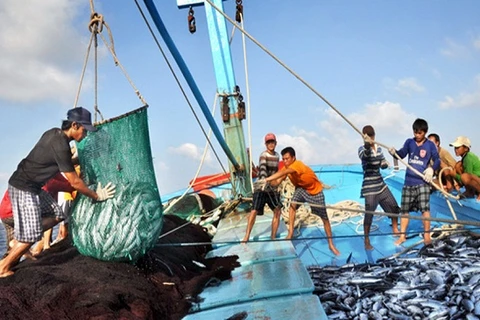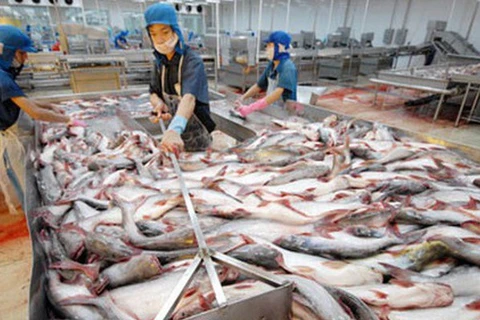HCM City (VNA) – The Vietnamese fishery sector needs a sustainable development strategy to stand firm in the world market for the long-run, experts have said.
As of the beginning of September, Vietnam’s aquatic products were available in 177 foreign markets over the world.
According to the Vietnam Association of Seafood Exporters and Producers (VASEP), the output of aquatic products – from both farming and fishing – has increased continuously over the past 17 years, with an annual average rate of 9 percent. Of this figure, the output of aquatic farming has risen by 12 percent per year and the output of fishing, by 6 percent.
VASEP said that the output of aquatic products increased by nearly 60 percent, from 4.6 million tonnes in 2008 to 7.3 million tonnes in 2017 – of which the farming yield accounts for 53 percent. The export turnover reached 4.5 billion USD in 2008 and is expected to double this year.
Quach Thi Khanh Ngoc, a lecturer at Nha Trang University’s economic faculty, said that Vietnam is one of the countries with the lowest adaptation to climate change. The Mekong Delta region is said to be the worst affected in the country and, as a result, the fishery sector is also harmed.
To better adapt to climate change, the sector needs specific actions by producers and farmers, with the involvement of scientists in producing resilient breeds and new technologies for the sector.
VASEP Vice General Secretary Nguyen Hoai Nam said that Vietnamese seafood processors and exporters have diversified their products; paid attention to food safety, hygiene, and quality; and strictly followed requirements of importers, which have helped Vietnamese aquatic products become available in many countries around the world.
Seafood exports now account for 4-5 percent of the country’s total export turnover, following mobile phones, garments and textiles, electronic products, and footwear.
VASEP General Secretary Truong Dinh Hoe noted that more than half of its seafood output is being exported. Meanwhile, 80 percent of the nearly 100 million Vietnamese people use aquatic products.
Therefore, the domestic market, when being missed by local exporters, will create a big opportunity for other countries which want to export their products to Vietnam. At this point, Vietnamese enterprises will face difficulties in competing in the domestic market, Hoe added.
Nguyen Ngo Vi Tam, General Director of Vinh Hoan Company in the Mekong Delta province of Dong Thap, shared that although the domestic market brings about lower profits than export, it can consume 13-14 percent of the company’s processed products.
To facilitate product circulation on the local market, Tam suggested improving the logistics system and bettering the distribution channel to ensure products maintain its high quality when reaching the hands of customers.–VNA
VNA
























